(This article was originally released in June 2019)
“Call it both ways!” “Those referees are cheating us!” “You are the worst, Blue!”
How many times have you heard (or said) these phrases at a game? I get to see a lot of amateur sporting events and I am still amazed at the frequency of disparaging comments made at officials by fans, coaches and even players. It’s appalling behavior simply because it’s no way to treat another person. There is, however, an underlying reason why I am so put off by these comments. The reason came to light after reading, “The Choice: Embrace the Possible,” by Dr. Edith Eva Eger.
Obviously, I love sports and the life lessons they teach. Not all teaching is positive. If we are not aware of our actions and behaviors the results are damaging. Frequently, comments are made about how a team “gets all the calls.” Or we’ll speak of an assumed advantage another organization possesses that makes them successful. As fans or participants we rarely give credit for excellence. It has to be something external; something beyond our control. It can never be the opposition was simply better.
A Victim or Thriver:
“A good definition of being a victim is when you keep the focus outside of yourself, when you look outside yourself for someone to blame for your present circumstances, or to determine your purpose, fate or worth.” – Dr. Eger
If you play competitive sports I guarantee you will be victimized. Someone will do you wrong – an official will blow a call, a teammate will not pass you the ball, an opponent will perform an illegal act or your coach will not utilize your talent properly. These things are not your fault; however, how you choose to respond to these events will determine whether you become a victim or a thriver.
A victim sees these circumstances as an injustice. He develops a pessimistic mindset. He feels he has no control over the situation so he stops trying. Instead of looking inward, the victim will look outside himself for the answer. The victim spends his time blaming and complaining which quickly turns to self-loathing.
A thriver, on the other hand, acknowledges that he has been wronged, but he takes responsibility for his hardship and healing. The thriver doesn’t place blame for the wrongdoing; instead, he begins the hard work necessary to move forward. The thriver moves toward the pain and understands it’s only temporary. While the victims ask, “why me,” the thriver says, “what’s next.”
A Note to Parents:
Do we want our children to be victims or thrivers? I really believe we have the opportunity to shape their mindset in a positive way.
First, it starts with awareness. We must realize that our words and actions are the foundation. Are we modeling behaviors like blaming the officials for our child’s lack of success? Is it the coach’s fault? Are we inadvertently creating a victim?
Next, we have to understand that when our child is wronged, it is actually an OPPORTUNITY for them to grow. The hardship they have been dealt can transform them to thrive; to be a person who overcomes obstacles, perseveres and develops grit. A football coach I highly respect told me parents should pray their kids are third string. They’ll develop more life skills than the person that begins as a starter.
Lastly, we must fight the powerful urge to intervene and remove the obstacle. Removal of our child’s pain point will feel good as a parent in the short-term. With enough work we can remove the bully from their group, get their coach fired, have their teacher reprimanded, get them on the all-star team. But are we really helping them? Or are we actually developing a victim?
The Sports and Life Parallel:
Just like we will eventually be wronged in sports, in life, there will be times when we are victimized but that doesn’t mean we are victims. We’ll experience a bad boss; we’ll be passed over for a promotion; factors outside of our control will lead to suffering. Worse yet, illness to ourselves and love ones will eventually strike. How we choose to respond to these events are within our control.
Dr. Eger writes, “suffering is inevitable and universal – how we respond to suffering differs.” This week, I will be intentional with my words and actions with my children and those around me to instill values of choice. I will choose to thrive and not be a victim.
